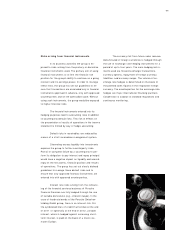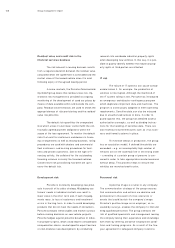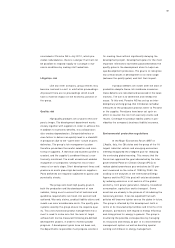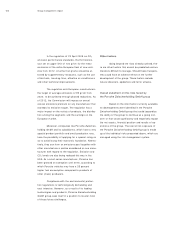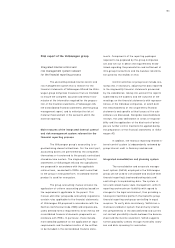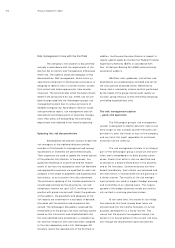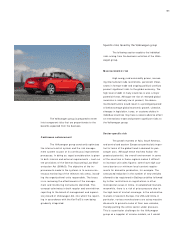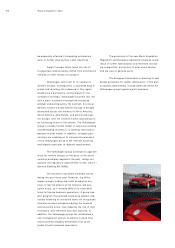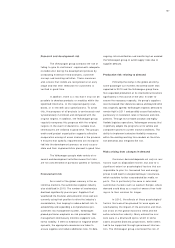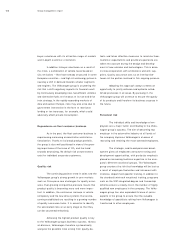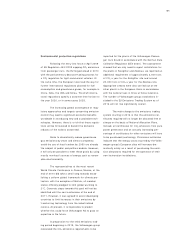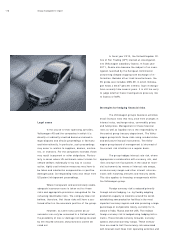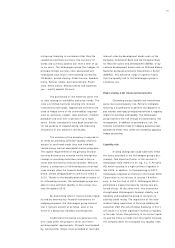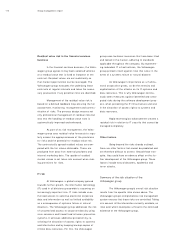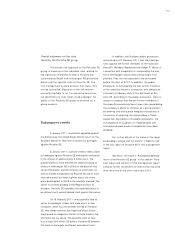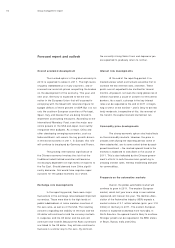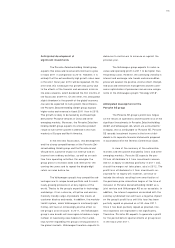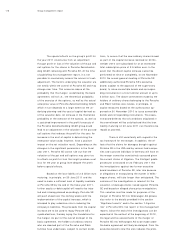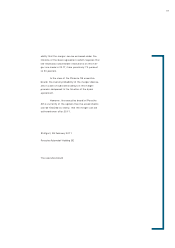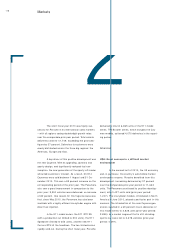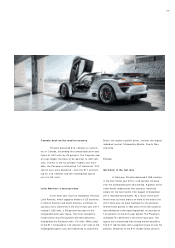Porsche 2010 Annual Report Download - page 111
Download and view the complete annual report
Please find page 111 of the 2010 Porsche annual report below. You can navigate through the pages in the report by either clicking on the pages listed below, or by using the keyword search tool below to find specific information within the annual report.Environmental protection regulations
Following the entry into force in April 2009
of EU Regulation 443/ 2009 capping CO2 emissions
from passenger cars, the EU forged ahead in 2010
with the parliamentary decision-making process for
a CO2 regulation for light commercial vehicles. At
the same time, the European rules lead the way for
further international regulations planned for fuel
consumption and greenhouse gases, for example in
China, India, the USA and Korea. The draft interna-
tional regulations specify a concrete time horizon to
the year 2020, or in some cases 2025.
The increasing global convergence of regu-
latory approaches and targets concerning emission
control may lead to significant economic benefits
worldwide in introducing new and sustainable tech-
nologies. However, there is a risk that these regula-
tions will be formulated to benefit the domestic
industry of the nations concerned.
Goals to dramatically reduce greenhouse
gas emissions by 2030 and almost completely
avoid the use of fossil carbon by 2050 are already
the subject of public and political debate. However,
it will only be possible to meet these goals by using
mostly non-fossil sources of energy such as renew-
able electromobility.
The representatives at the most recent
World Climate Conference in Cancun, Mexico, at the
end of 2010 did take a small step towards estab-
lishing a uniform global framework for climate pro-
tection: with the exception of Bolivia, all member
states officially pledged to limit global warming to
2°C. Concrete steps towards this goal will not be
identified until the next conference at the end of
2011. However, it was agreed to assist developing
countries to limit increases in their emissions by
transferring technology from the industrialized
nations. At present, it is impossible to predict
whether this could force Volkswagen AG to pass on
expertise in the future.
In preparation for the third emissions trad-
ing period beginning in 2013, the Volkswagen group
calculated the CO2 emissions requirements to be
reported for the plants of the Volkswagen Passen-
ger Cars brand in accordance with the German Data
Collection Regulation (DEV 2020). The assessment
showed that we only need to report installations for
the plants in Salzgitter and Zwickau: we reported an
additional requirement of approximately 3,000 tons
of CO2 a year for the Salzgitter site and around
20,000 tons of CO2 a year for the Zwickau site.
Appropriate checks were also carried out at the
other plants in the European Union in accordance
with the national laws in force at those locations.
The number of Volkswagen group installations in-
cluded in the EU Emissions Trading System as of
2013 will not rise significantly overall.
The main change to the emissions trading
system starting in 2013 is that the emissions cer-
tificates required will no longer be allocated free of
charge on the basis of National Allocation Plans.
Instead, all certificates for CO2 emissions from pure
power generation and an annually increasing per-
centage of certificates for other emissions will have
to be purchased (auctioning). Provisional estimates
indicate that the energy costs incurred by the Volks-
wagen group’s European sites will increase dra-
matically solely as a result of purchasing the emis-
sion allowances required for the operation of their
own incineration installations.
10 9


